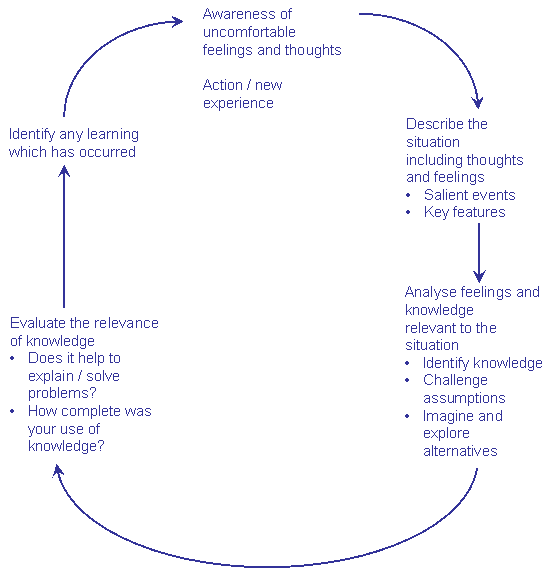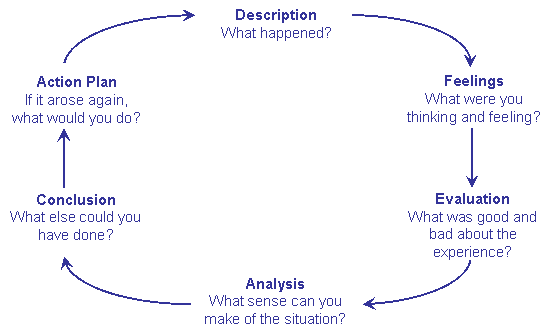
This Holistic Reflection Model is the one that midwifery students will be using, from 2018.

Bass, J, Fenwick, J., & Sidebotham, M. (2017). Development of a model of holistic reflection to facilitate transformative learning in student midwives. Women and Birth, 30(3), 227-235. doi:10.1016/j.wombi.2017.02.010
The following cues are offered to help practitioners to access, make sense of, and learn through experience.
Description
Reflection
Influencing factors
Learning
Further Reading
Johns, C. (1994). Nuances of reflection. Journal of Clinical Nursing, 3, 71-75.
This reflective cycle is a useful tool to guide your reflection:
1. Identifying a situation in practice >>> 2. Reflecting: Focus on feelings and behaviour >>> 3. Understanding: Feelings are motivators of behaviour >>> 4. Identifying learning needs: Consider knowledge, attitude, skills >>> 5. Taking action to meet own learning needs >>> 6. Developing a plan to change action.

Atkins, S., & Murphy, K. (1994). Reflective Practice. Nursing Standard, 8(39), 49-56.

Gibbs, G. (1988). Learning by doing: A guide to teaching and learning methods. Oxford: Further Education Unit, Oxford Polytechnic.